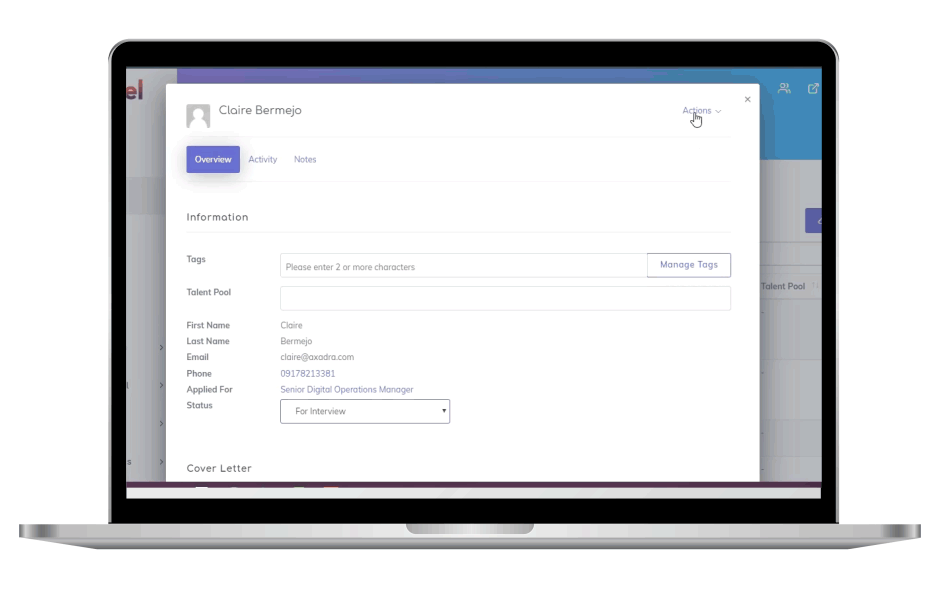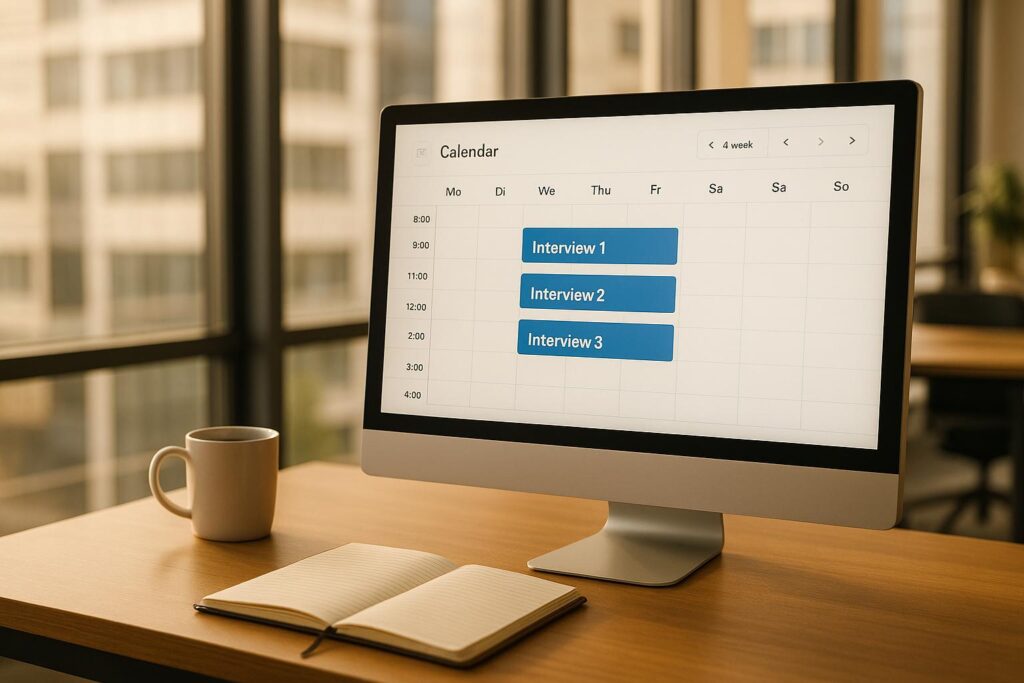The success of any business hinges on having the right person in the right roles. However, since every business will grow and shift in time — often unexpectedly — it’s important to guarantee that you have the right people on hand when specific positions need to be filled due to employee absenteeism, sudden promotion, or job termination.
That’s when backfill positions come into play.
What is a backfill position?

In the context of employment, the definition of backfill refers to the act of filling in a position left by an employee who has been moved to another role, went on a justified leave of absence, or quit/lost their job.
A new employee with the qualifications and the skill set of the former one will fill in the vacancy for a given period of time. By backfilling a position, you can ensure the continuity of your company’s work processes, prevent possible downtimes, and minimize costly disruptions. After all, according to the Gallup-Healthways Well-Being Index, employee absenteeism can cost employers an estimate of $84 billion in a year. As much as possible, you don’t want your company to contribute to that amount.
Reasons to backfill a position
Backfill positions usually open when an employee is:
- Sick or on vacation: When an employee is ill or goes on a long vacation, they may leave skill gaps that only backfilling can address. Managerial positions and roles that require special skills are prone to this problem as companies do not usually create strategic redundancies for these roles.
- Terminated: Once an employee is suddenly terminated or quits their job on short notice, backfilling can produce either a short-term or permanent replacement.
- On parental leave: When an employee goes on parental leave, they do not immediately lose their position or statutory rights. Once their parental leave is over, they should be able to go back to their usual duties and responsibilities. Similarly, it’s illegal for employers to fire employees due to pregnancy or their need to apply for a maternity leave. If you need backfill positions for employees on parental leave, make it clear to the replacements that their roles are not permanent.
Why backfill positions are important
- Overtime costs add up quickly
When a company is short on staff due to unforeseen employee absence, the rest of the workforce has to pick up the slack which can result in overtime. If you pay your employees by the hour, ongoing overtime expenses will impact the payroll budget, cutting into the bottom line.
Additionally, if the vacant position requires specialized expertise or knowledge, other employees may not be able to do the work, delaying the progress and completion of projects. It won’t be long before the stress and additional work will take their toll on the rest of the employees.
Backfill, by definition, will fill in for the absent employee and ensure that operations go smoothly.
- Negative impacts of an overworked team
Your employees may not raise issues concerning the extra hours, but they are only human. Eventually, they’ll feel undervalued and overworked. As the additional responsibilities and pressure build up, more and more employees will become discontent in their roles. Due to work stress, they may also develop depression, anxiety, and problems with their physical health.
Additionally, as employee morale declines, so will productivity. Some employees may even search for opportunities elsewhere, which will only make matters worse.
You can remedy the situation and avoid employee burnout by quickly filling in backfill positions.
- Important tasks being neglected
Despite best efforts, employees might not be able to complete all the tasks and responsibilities associated with an unfilled position. They may be able to handle time-sensitive tasks, but things will pile up while waiting for the new hire to take command.
Filling in backfill positions in a timely manner enables the rest of the team to function efficiently and at full capacity. With all hands on deck, your company won’t lose existing business or miss key opportunities for growth.
Strategies on how to backfill positions with top talent
Now that we’ve tackled what a backfill position is and its importance in your organization, it’s time to discuss contingency plans that you can implement before the need to fill vacancies arises in your company.
These following strategies can help:
- Identify at-risk employees or positions
Pinpoint specific roles that don’t have redundancies. Typical scenarios would include a web development company with only one programmer, a small business with only one accountant, or a restaurant with only one head chef. Likewise, identify key positions that will likely become vacant soon, such as when you’re considering on firing a worker for incompetence or an employee has just announced that their wife is pregnant.
- Develop a skills database
Record the skills of each member of your workforce so that you can immediately satisfy a backfill demand when the need arises. A database makes it easy for you to compare the skills of an individual employee with the necessary abilities at any point in time. For instance, an employee who transferred from Sales to another department may still have the skills or the competence needed to fill in a temporarily vacant position in the future.
- Hire more referrals
According to recent statistics by HR industry experts, 70 percent of referred employees have not changed positions since onboarding, which demonstrates that employers can expect to not have to backfill these roles as much as others. Not only do employee referrals reduce your need to open backfill positions, but they are also a great way to improve the quality of hires.
Nowadays, it’s even easier to manage referrals and rewards with employee referral tracking software. There’s really no excuse for you to not encourage your employees to refer their friends and family members. The more referrals you have in your workforce, the fewer backfill positions you’ll need to worry about in the future.
- Cross-train employees
Cross-training your employees help develop in-house redundancies that can prepare them for backfill positions in the future. For instance, you can train marketing specialists to be part of the Sales team and vice versa. Training subordinates, such as junior project managers, for higher managerial roles can also work.
- Constantly recruit
Often, the best employees are passive job seekers. Meeting people at networking events, conferences, and even social events can be the best way to discover top talent. The key is to always network, check their resumes, and think about what your team needs. You can also use social media channels such as LinkedIn to identify potential candidates.
Additionally, if you have an underperforming employee, begin looking for their replacement even before you put them on a performance improvement plan. While turning around an employee’s performance can happen, it’s often unlikely, especially if they’re not a good fit for the role. It’s also bad practice to wait out and see if a person is going to improve or not. If you can find a better replacement who will significantly improve your workforce, strike while the iron’s still hot.
- Pair junior and senior employees in mentorship programs
It takes time for certain employees to excel in their roles, but make sure that they clearly see their career path within your organization. Pairing junior and senior employees in mentorship programs will not only help them realize their potential within the company, but it will also offer them a glimpse into the position they’ll one day fill.
The mentorship program should both foster growth and a sense of connection. Design it in a way that it benefits both the individual and your need to fill in backfill positions in the future.
- Outsourcing
We don’t really recommend this unless the other strategies don’t work out. In case of extended employee absence due to severe sickness or parental leave, you may need to hire a contract replacement for backfill positions. However, cross-training employees or having an employee referral platform in place are still the best options.
Will backfill positions work for my company?

Backfill positions offer many advantages, including minimizing recruitment costs if there’s already a qualified replacement within your organization. Likewise, cross-training reduces employee onboarding expenses and time spent hiring candidates. It can also help increase employee retention as other skilled workers can look forward to taking up higher positions within your company.
However, backfilling also leads to costly redundancies such as training and paying two employees for the same role without an increase in overall productivity. That’s why some employers choose a more straightforward approach to replacing employees, such as conducting regular informational job interviews even when there are currently no open positions. There are also those who outsource part-time staff who can take up short-term responsibilities at lower costs.
Overall, backfill positions exist to minimize workflow interruptions. If continuity of business operations is your main priority, then yes backfilling is certainly worth it, despite the redundancies. If you can wait for your employee to report back to work without a replacement, then it’s all about finding ways to ensure stable operations without compromising on the quality of output.
At the end of the day, it’s all a matter of determining what’s right for your business.












